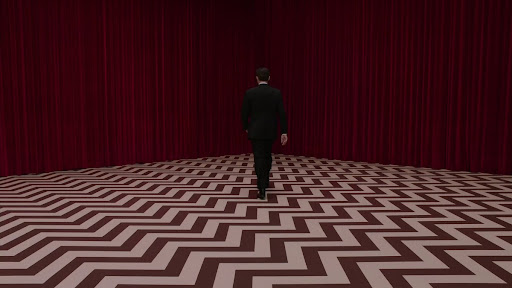The "Mythic Underworld" is a term popular in the OSR that was (probably) coined by Trent Smith and then popularized through an essay by Jason Cone in Philotomy's Musings. Cone argued that the rules of OD&D can be interpreted to suggest that the "dungeons" that adventurers delve into aren't really to be understood as real, logical spaces created by normal people or natural processes. Rather, they're more like a surreal, dreamlike, and hostile realm that runs on its own twisted logic, which might be inconsistent. It gives the referee some leeway to make a contrived, game-y, "funhouse" dungeon instead of stressing about accuracy or rationality.
Much of what Cone describes are just traits of megadungeons, or even simply dungeons in general. Things like, "non-linear pathways" and "lots of connections between levels" aren't really mythic, they're just good level design. So, extracting from his original writings on the matter, here are the traits he identifies that are actually mythic (in my view):
- It's so large it might have infinite levels.
- The deeper you go, the more dangerous it is.
- Its layout may change over time.
- Doors are locked/stuck for PCs by default, but automatically swing open for monsters.
- Related, it is shrouded in darkness, but all monsters have infravision.
- It should be noted that when a monster is persuaded to join the party, they lose these two privileges! This strongly suggests that the space itself is intentionally rewriting its own rules to oppose the players.
- Torches and whatnot might be randomly blown out by a strong gust of wind, despite the fact that you're deep underground in, like, a tomb or something.
And... that's it. I always thought this idea was much cooler in theory than in reality. I agree with Cone that this is really the only reasonable way to interpret the rules, but I always wanted there to be more. So I've compiled some:
- Party incurs fatigue/stress the longer they spend in the dungeon (taken from Basic D&D).
- Rations spoil once you enter the dungeon (BECMI D&D, thanks to ktrey from d4caltrops.com)
- When the players open treasure, monsters might pop out of the walls, generated from thin air (taken from the board game HeroQuest).
- Monsters don't exist until the players first observe them. Thus, exploration should be slow and methodical or else the players will too quickly surround themselves in monsters (also taken from HeroQuest).
- The monsters cannot set off traps (HeroQuest again but I wonder if this might be encoded in D&D somewhere in its history).
- The scenery and room features attack you (countless haunted house media, but in this case I was inspired by the 2006 movie Monster House).
- Stairs turn into ramps, doors start randomizing where they lead to, hallways become endless, secret doors appear and then disappear (no, I don't mean they become hidden again. I mean they stop existing), etc. (more haunted house shenanigans).
- Weird M.C. Escher gravity rules.
- Advanced Darkness.
- Every hall keeps leading back into the same room no matter what, and it's full of horrible doppelgangers (the Black Lodge from Twin Peaks).
- Doors to rooms that would overlap each other, doors into rather thin walls, windows to the outside world in an interior room, doors/windows/entrances moving which side of the room they’re on, etc. (the Overlook Hotel from The Shining).
-Dwiz


No comments:
Post a Comment